ok now the link is in - I can see stuff
cool you have peaks and clouds - great modules...
now I can rip into it
it seems very heavy on sound sources - not just the fact that imo there are too many in this size case, but they also take up too much space and there's not really enough support modules - sound modifiers, modulation sources and especially utilities - to do the number of sound sources justice...
top row:
Pams - good
now I'm assuming here that your intention is to use peaks primarily as a kick/snare - combined with the hats to make a simple percussion set up - nothing wrong with that - but I'd suggest a simple sub-mixer so you can process - filter etc the kit as one - maybe a cp3 type one that can add a bit of dirt (manhattan analog perhaps)
there's then 3 vcos - are you intending to use these as single voices? how are you going to shape notes - or are you just using them as drones? not enough vcas... not enough filters... otherwise if you are intending to use them to create a complex voice - again, there's no sub-mixing or waveshaping in the case & both the dixie and sto could benefit from sub-mixers in order to mix their waveforms before filtering etc - & I'd definitely drop the synthrotek - they don't have a good reputation for building reliable modules or customer support from what I've heeard and well ethically only the b-company really surpass them in scraping the bottom of the barrel
elements - great module - but in a case this size it's on the large size to put it mildly - I'd be tempted to switch it out for a rings - worthwhile comparing the 2 there's a lot of overlap...
es9 good - not used one but I hear they're great - can be used as an eoc mixer - if configured properly via midi (you might want an extra module to do this - or just diy some midi connectors into the case)
1u: NB I'd always get a 3rd 3u row over a 1u row the cost in terms of rails etc is the same but they only hold 1/4 of the functionality and I've never seen a compelling module that's only available in 1u & 3.5" is, well, only 3.5" - but others seem to like them...
o&c - it's popular... not convinced...
zeroscope - again not convinced - as you have the es9 I'd just use a free one in vcv rack - when needed - I've got an es8 and quite frankly I've never found a need for a scope yet in over 5 years
2 sub-mixers - it's a good start... but you've used one for the drums and one for dixie - you need more of these...
cockpit - well at least it's not as annoying as the 3u version - inputs aren't on stereo jacks... but I think it's kind of superfluous - in that it's over specified for a sub-mixer - and there's a mixer in the es9 and then there's the sputnik - but see below for that
bottom row:
evolution - a big filter - maybe too big in this size case
octone - hmm - looks complicated - and it only has one pitch out - which is fine but then I'd want a buffered mult to send the pitch accurately to different sound sources - personally I'd want a 3-4 track sequencer in here given the number of sound sources
qpas - again a big filter and too big - I think I'd want at least 3 filters given the number of sound sources - 1 for the percussion, 1 for the sto, 1 for dixie...
adsr - again synthrotek - see above - but do you really need a adsr? I'd want more envelopes -but I'd probably use Pams - and you have...
Maths - brilliant module - download the 'maths illustrated supplement' work your way through it a few times and use it as a jumping off point for patch-programming - one of the most powerful techniques in modular - but saying that I'd also want all the basic functionality duplicated in other modules - why? because when you use Maths for something interesting (ie something you've patch programmed it to do - bouncing ball etc etc) then you can't really use it for anything else - and if you use it as 2 basic envelopes/lfos and a couple of attenuverters - then you can't useit for anything interesting...
quad vca - good start - I'd want more - they're not just for audio - they're incredibly useful for modulation too - I'd go veils over this as it's got a few more useful features - ok it's an extra 2hp and a little more expensive - but it has 20db of gain so can be used as an external input, it has offsets and it is continuously variable between exponential and linear responses - the doepfer can be either linear or exponential iirc, but to change it you have to take it out of the rack and move jumpers.... pita
sputnik mixer - as far as I am aware this is another very difficult to get hold of module - sputnik may or may not be producing modules again... and I've also heard of reliability/build quality issues - but i don't know for certain - plus the es9 has mixing capabilities...
rosie - as I mentioned above I think this is discontinued - the xoh is the replacement - but do you really need an output module when you have the es9? I've never needed one other than for headphones - and there are smaller ways of dealing with that - and the es9 has headphone outs
"some of the best base-level info to remember can be found in Jim's sigfile" @Lugia
Utility modules are the dull polish that makes the shiny modules actually shine!!!
sound sources < sound modifiers < modulation sources < utilities


